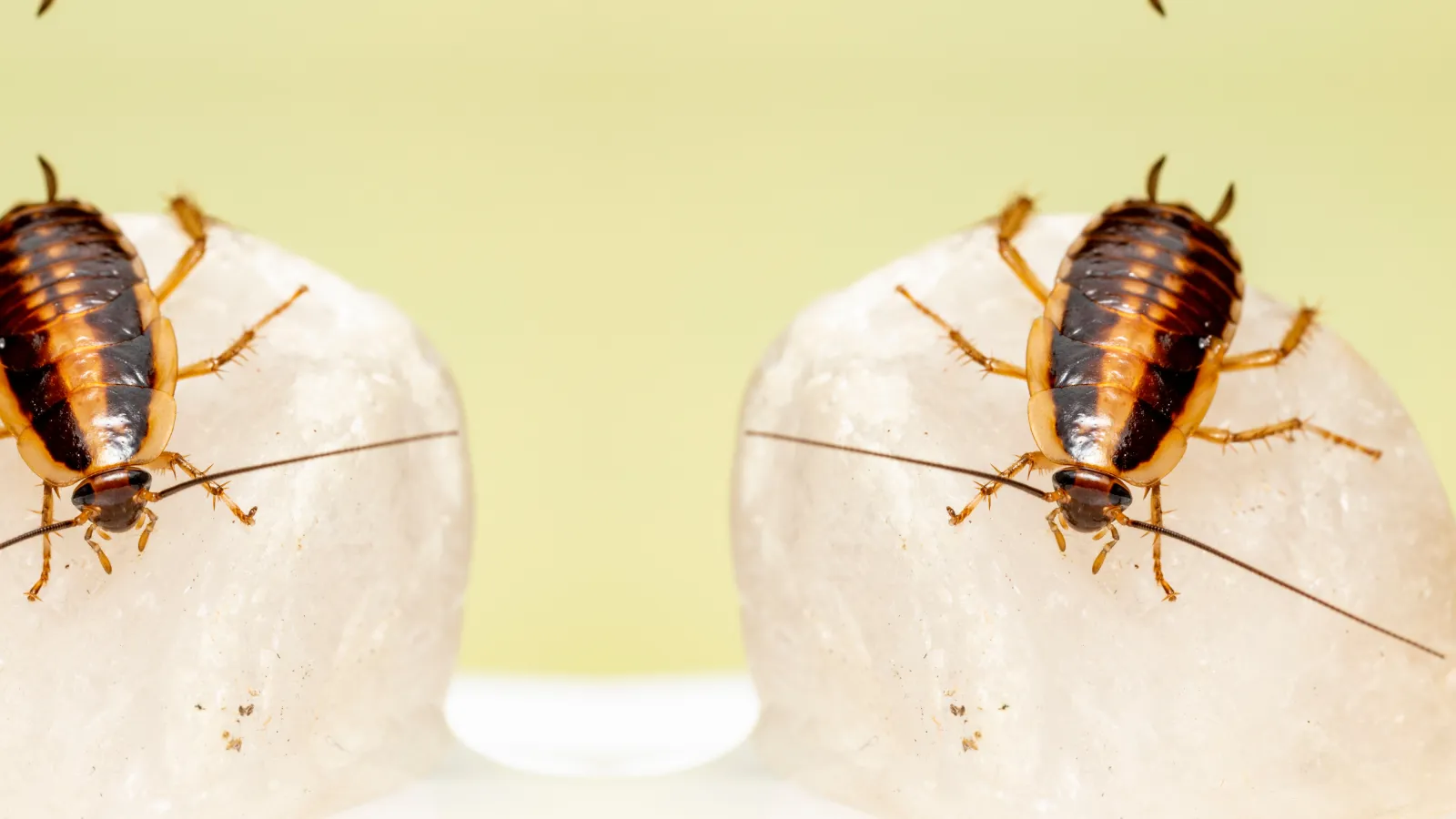
German Cockroaches
Latin Name: Blattella germanica
German cockroaches (Blattella germanica) are one of the most common and problematic species of cockroaches found worldwide, particularly in urban environments. Here's a comprehensive overview of German cockroaches:
Appearance: German cockroaches are small, typically ranging from about 1/2 to 5/8 inches (12 to 15 mm) in length. They are light brown or tan with two distinct dark stripes running lengthwise on their pronotum (the shield-like structure behind their head).
Habitat: German cockroaches prefer warm and humid environments and are commonly found indoors, particularly in kitchens, bathrooms, and other areas with access to food, water, and shelter. They are known to hide in cracks and crevices, behind appliances, and in cabinets and drawers.
Reproduction: German cockroaches reproduce rapidly. A single female can produce several batches of eggs, each containing up to 40 eggs. The development from egg to adult typically takes about 100 days, with adults living for several months.
Diet: German cockroaches are scavengers and will feed on a wide variety of organic matter. They are particularly attracted to food crumbs, grease, and other food residues. However, they can also feed on non-food items such as soap, glue, and book bindings.
Health Risks: German cockroaches are known vectors of various pathogens and allergens. They can contaminate food and food preparation surfaces with bacteria such as Salmonella and can trigger allergic reactions and asthma symptoms in sensitive individuals through their saliva, feces, and shed skin.
Control: Controlling German cockroach infestations can be challenging due to their rapid reproduction and ability to hide in inaccessible areas. Integrated pest management (IPM) strategies, which combine chemical, physical, and cultural control methods, are often recommended. These methods may include insecticide treatments, sanitation measures, sealing entry points, and reducing moisture levels.
Prevention: Preventing German cockroach infestations involves maintaining good sanitation practices, such as keeping food and garbage sealed, cleaning up spills promptly, and eliminating sources of moisture. Regular inspections and monitoring can help detect infestations early before they become widespread.
Overall, German cockroaches are a significant nuisance and health concern in many homes and businesses, requiring prompt and comprehensive control measures to manage effectively.
Similar Pests: American Cockroach, Asian Cockroach